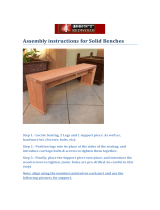
Page 15
Copyright © 1991-1998 by Linn Products Limited. All Rights Reserved.
Revised Jan 1998
INDEX
and outer platters meet, on a straight line between the
centre spindle and the tonearm bearing housing. The
whole suspended system should bounce straight up
and down with no sideways or erratic motions.
If it is necessary to adjust the suspen-
sion, first check that the grommets are
properly seated. Then unplug the sig-
nal lead from arm. Begin with the
spring/grommet assembly on the left
side of the turntable. Rotate the entire
spring/grommet assembly a little at a
time (1/16 to 1/8 turn) until the action of
the suspension is as straight as possi-
ble. Next, move to the front spring/
grommet assembly and adjust it in a
similar manner. Lastly, move to the
rear spring/grommet assembly and
adjust it in the same manner.
Each time you rotate a spring/grommet assembly, ensure
that the entire assembly rotates during adjustment so that
you do not introduce a twist in the spring. As you finish
adjusting each spring, push up slightly and then release
the washer on which the spring/grommet assembly
rests. This will release any twist which may have been
introduced into the spring.
Note that as you rotate a spring, the level of the
suspension may change. If this is the case, re-adjust the
level as necessary before moving to the next spring.
Once you have adjusted all three springs, if the suspen-
sion is not satisfactory repeat the adjustments, starting
again at the left, moving to the front and then to the rear.
You may occasionally have to go around the table two or
three times to fully adjust the suspension.
When you are finished, the suspension should be able
to move freely in any direction, and move roughly straight
up and down when tapped as described earlier.
If you should have problems, make sure that you have not
moved the suspended assembly to a position in which
any top grommet touches the chassis bolt that passes
through it. Also, check that the armboard is not touching
the stainless top plate or the plinth.
Large
Grommet
Spring
Small
Grommet
Washer
Large nut.






















